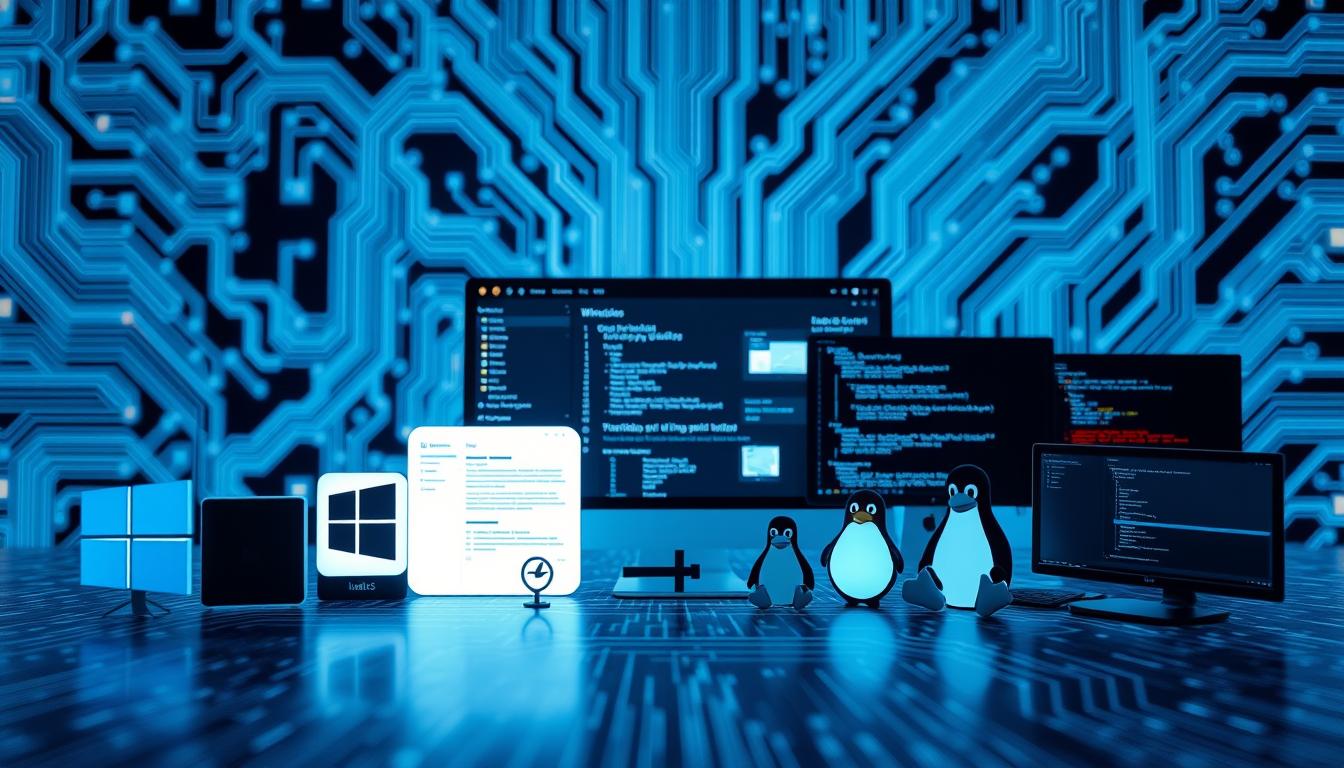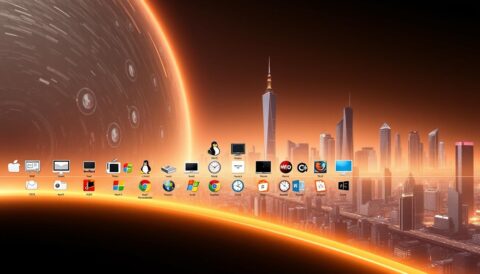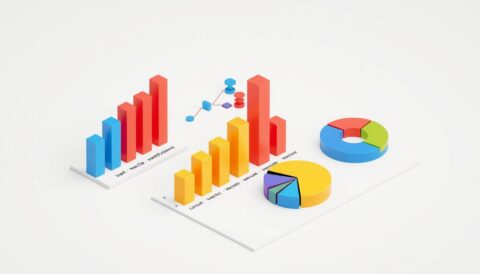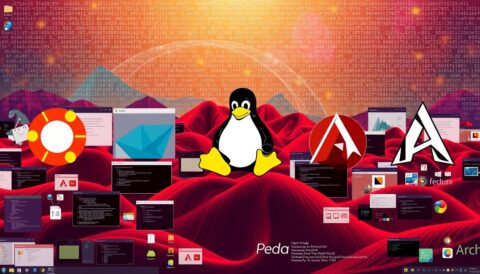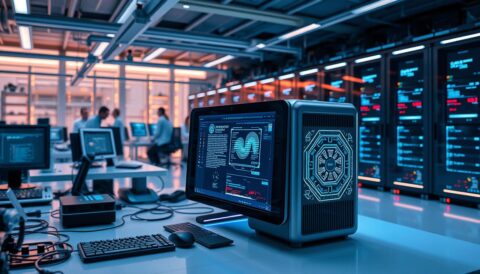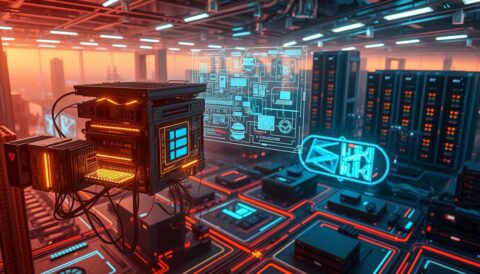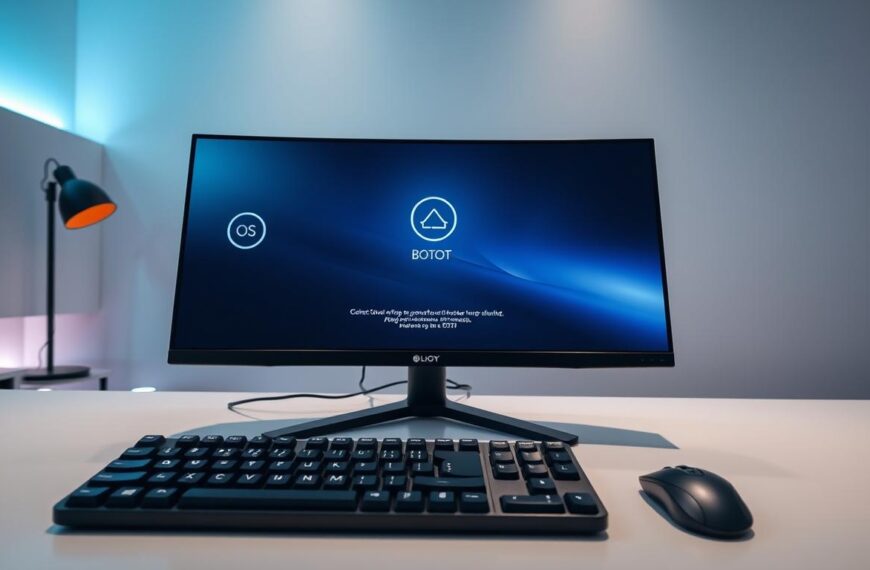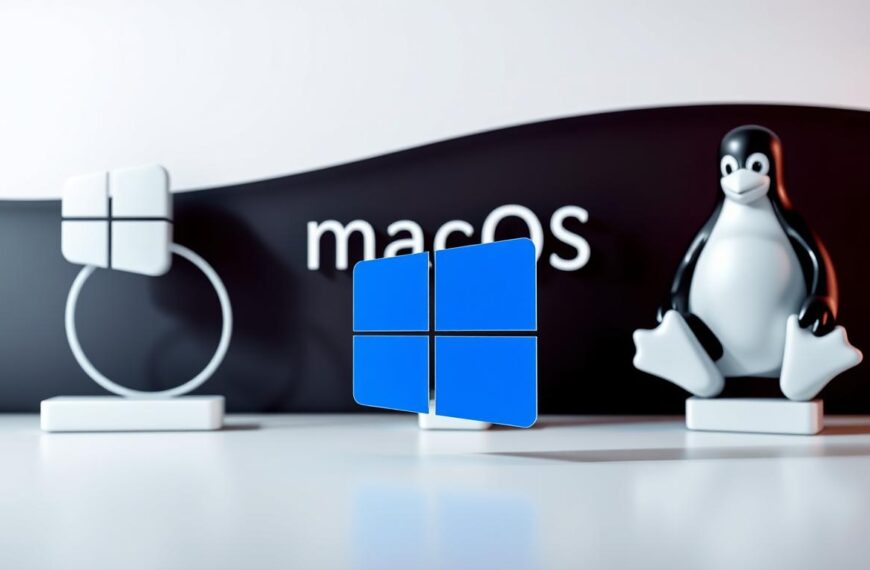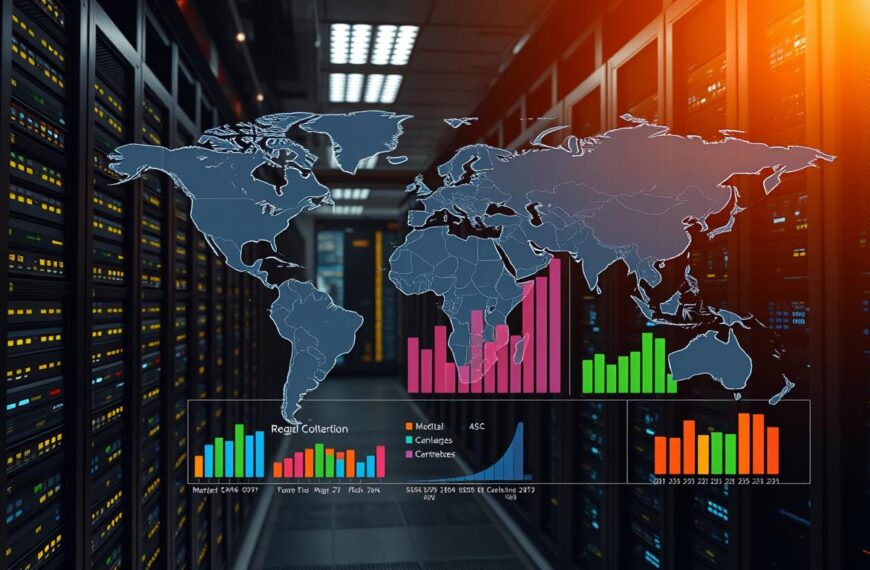An operating system (OS) is the cornerstone of any computer, serving as the intermediary between hardware and user. It manages resources, orchestrates tasks, and ensures seamless interaction. Whether you’re using a desktop, laptop, or mobile device, the OS plays a vital role in your computing experience.
Operating systems are classified into several categories based on their functionality and design. These include single-user, single-task systems like older smartphones, and multi-user, multi-tasking systems such as Windows, macOS, and Linux. Each type is tailored to specific needs, offering unique features and capabilities.
For instance, Windows dominates the market with over 80% global usage, while macOS and Linux trail behind at less than 10% and 2% respectively1. Mobile OS like Android and iOS are designed for on-the-go use, differing from desktop systems in both design and functionality.
Key features vary across systems. Windows offers extensive hardware and software support, making it a versatile choice. macOS, exclusive to Apple devices, emphasizes integration with other Apple products. Linux, known for its open-source nature, is popular in server environments due to its customization capabilities1.
Choosing the right OS depends on your specific needs. If you’re a creative professional, macOS might be ideal. For gamers and business users, Windows is often the go-to choice. Linux appeals to developers and those seeking customization.
In summary, understanding the different types of operating systems is crucial for selecting the best fit for your computing requirements. This guide explores the diverse options available, helping you make an informed decision.
Understanding Operating Systems and Their Functionality
An operating system (OS) is essential software that manages computer hardware and provides a platform for running applications. It acts as a bridge between the user and the hardware, ensuring efficient operation and resource management.
Defining the Role of an Operating System
The primary role of an OS is to oversee computer operations, manage hardware resources, and facilitate user interaction. It handles tasks like process management, memory allocation, and input/output operations, ensuring smooth functionality. For instance, modern OS support multitasking, allowing multiple programs to run simultaneously2.
Components: Kernel, Shell, and Interface
The OS comprises two main components: the kernel and the shell. The kernel, the core of the OS, manages hardware and system resources. It handles memory management through paging, enabling multiple programs and documents to run simultaneously2. The shell acts as an interface, allowing users to interact with the OS via commands or graphical elements.
The graphical user interface (GUI) is a common interface type, though it requires significant processing power2. Device drivers are crucial for operating input and output devices, with each device needing its own driver2.
Process management is another key function, ensuring efficient CPU usage. Security features include user accounts with access levels like administrator rights, and logs track user activities for auditing purposes2.
Exploring the Batch Operating System
A batch operating system is designed to manage and execute tasks in groups, known as batches, without requiring direct user interaction. This approach optimizes efficiency for large-scale operations, making it ideal for applications like payroll processing and data analysis3.
How Batch Systems Manage Job Batches
Batch systems function by grouping similar tasks together and processing them sequentially. This method minimizes the need for user input, allowing the system to handle repetitive jobs efficiently. For instance, payroll systems benefit from this setup, as they process numerous transactions in a single batch4.
Advantages and Limitations
The primary advantage of batch operating systems is their ability to handle large volumes of data efficiently. They reduce idle time by processing tasks in sequence, making them suitable for environments where continuous operation is crucial5. However, a significant limitation is the potential for CPU underutilization when waiting for new batches, leading to inefficiencies during idle periods4.
Despite these limitations, batch systems remain effective for specific applications, offering a reliable solution for organizations needing to process large datasets without frequent user intervention3.
Multi-Programming, Time-Sharing and Multi-User Systems
Modern operating systems have evolved to support complex tasks and multiple users. This section explores three advanced concepts: multi-programming, time-sharing, and multi-user systems. These technologies enhance efficiency, interactivity, and resource utilisation, catering to diverse computing needs.
Enhancing Resource Utilisation with Multiprogramming
Multiprogramming allows a computer to run multiple processes simultaneously. This approach maximises CPU utilisation by reducing idle time6. For instance, while one process waits for input, another can execute, ensuring efficient resource use.
Memory management in multiprogramming systems is crucial. Techniques like paging and segmentation prevent conflicts and ensure efficient memory allocation6. This makes multiprogramming ideal for environments requiring high throughput, such as servers.
User Interactivity in Time-Sharing Systems
Time-sharing systems introduce interactivity by allocating CPU time in fixed slices called time quanta. This allows multiple users to interact with the system simultaneously, each receiving a time slice6.
Each process in a time-sharing system gets a brief CPU time slice before the next task is scheduled. This round-robin approach ensures fair access and quick response times, enhancing user experience6.
Preemption is key in time-sharing, letting the OS interrupt tasks to allocate CPU time elsewhere. This prevents any single task from monopolising resources, maintaining system responsiveness6.
Multi-user systems extend these benefits to multiple users. They allow simultaneous access to shared resources, with each user receiving a portion of the system’s capabilities7. These systems are common in environments like supercomputers, where many users share computing power via different terminals7.
Understanding these systems is vital for choosing the right OS. Whether for personal use or large-scale applications, knowing how each system operates helps optimise performance and user satisfaction. Learn more about how these systems operate and their benefits.
Multi-Processing Operating Systems and Their Efficiency
Multiprocessing operating systems are designed to enhance performance by utilising multiple CPUs to execute tasks simultaneously. This approach significantly boosts throughput and ensures efficient resource utilisation, making it ideal for high-demand environments.
Parallel Processing and Increased Throughput
Parallel processing is a cornerstone of multiprocessing systems, where tasks are divided across multiple processors to expedite execution. For instance, a multiprocessing OS can complete three tasks in just 8 milliseconds by assigning each to a separate processor, whereas a single-processor system would take 20 milliseconds8. This method ensures rapid execution and system efficiency, especially in environments requiring high throughput.
Modern multiprocessing systems, such as UNIX, LINUX, and Solaris, exemplify this capability, leveraging parallel processing to manage complex applications effectively9. These systems are particularly beneficial for multitasking, allowing multiple programs to run simultaneously without performance degradation.
Redundancy and Fault Tolerance Benefits
Multiprocessing systems offer redundancy, maintaining stability even if one processor fails. In symmetrical multiprocessing (SMP) systems, all processors share memory and input-output buses, ensuring uninterrupted operation if one fails910. This fault tolerance is crucial for critical applications, providing reliability and minimizing downtime.
While SMP systems are more complex and costly, they offer enhanced efficiency. Asymmetrical multiprocessing (AMP) systems, though cost-effective, may lead to uneven workload distribution10. Despite these challenges, multiprocessing systems are economical as they share resources, reducing the need for multiple single-processor systems10.
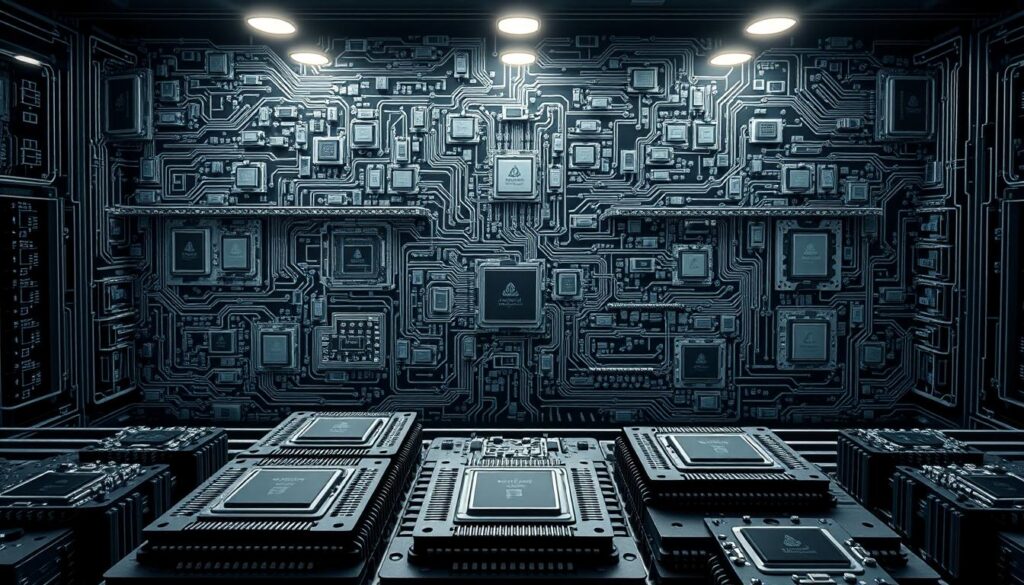
In conclusion, multiprocessing operating systems excel in high-performance environments, offering parallel processing for increased throughput and redundancy for fault tolerance. These features make them indispensable in modern computing, where efficiency and reliability are paramount.
Distributed, Network and Mobile Operating Systems
Distributed, network, and mobile operating systems each offer unique features tailored to specific computing environments. These systems are designed to handle diverse tasks, from managing resources across multiple computers to enabling interaction on portable devices.
Features of Distributed Systems
Distributed operating systems operate across multiple computers, often in data centres or cloud platforms. They excel in scalability and resilience by sharing resources and balancing loads11. This design allows for parallel processing, enhancing performance and efficiency.
Network OS: Security, Remote Management and Resource Sharing
Network operating systems provide centralised management and robust security for enterprise environments. They facilitate remote access and resource sharing, benefiting multiple users. For instance, Microsoft Windows Server exemplifies these capabilities, ensuring secure and efficient operations.
Innovations in Mobile Operating Systems
Mobile operating systems, like Android and iOS, are optimised for touch-based interactions and multimedia. They enhance user experience through intuitive navigation and customisation options, making them ideal for portable devices.
Each system type offers distinct advantages, whether it’s the scalability of distributed systems, the security of network OS, or the portability of mobile systems. Understanding these differences helps in selecting the most suitable OS for specific needs.
what are the different types of operating systems for computers
Operating systems vary widely, each offering unique management features, interfaces, and control mechanisms tailored to specific computing needs. Understanding these differences is key to selecting the most suitable OS for your device.
Comparative Overview of OS Functionalities
Modern operating systems are designed to manage hardware resources efficiently while providing a user-friendly interface. Systems like Windows, macOS, and Linux each excel in different areas. Windows, for instance, offers broad hardware and software compatibility, making it a versatile choice for both personal and business use. macOS, exclusive to Apple devices, prioritises integration with other Apple products and ecosystem services. Linux, known for its open-source nature, is favoured in server environments due to its customisation capabilities and robust security features.
Programming languages and processor management play crucial roles in OS functionality. For example, Linux supports a wide range of programming languages, making it ideal for developers. Additionally, multiprocessing systems like UNIX and LINUX utilise multiple CPUs to enhance performance, ensuring efficient task execution12.
Selecting the Appropriate OS for Your Device
Choosing the right OS depends on factors like user interface preference, processor compatibility, and system control needs. Here are some key considerations:
- Windows is ideal for gamers and business users due to its extensive software support and hardware compatibility.
- macOS is perfect for creative professionals who value integration with Apple’s ecosystem.
- Linux appeals to developers and power users seeking customisation and control.
Each OS offers distinct advantages, whether it’s the versatility of Windows, the ecosystem integration of macOS, or the customisability of Linux. By understanding these differences, users can make informed decisions to optimise their computing experience.
In conclusion, selecting the appropriate OS involves evaluating management capabilities, interface design, and control features. This guide provides insights to help users choose the best OS for their specific needs, ensuring enhanced performance and satisfaction.
Real-Time and Embedded Operating Systems in Modern Technology
Real-time operating systems (RTOS) and embedded operating systems are crucial in modern technology, providing precise control and efficiency in critical applications. These systems are designed to handle tasks with strict timing constraints, ensuring reliable operation in environments like air traffic control and medical imaging13.
Critical Applications of Real-Time Systems
RTOS excels in scenarios where immediate responses are essential. For instance, in medical devices and industrial control systems, RTOS ensures tasks are executed within strict deadlines, preventing system failures14. The reliability requirement of 99.99% uptime in critical applications underscores the importance of RTOS13.
Embedded OS: Small Footprint and Specialised Tasks
Embedded operating systems are tailored for devices with limited resources, such as household appliances and industrial machines. These systems operate with minimal memory, ranging from 1 KB to 64 MB, and are designed for specialised tasks, often without user interaction13.
| Feature | RTOS | Embedded OS |
|---|---|---|
| Purpose | Strict timing constraints | Specialised tasks |
| System Resources | Optimised for real-time processing | Minimal memory usage |
| Input Processing | Fast and precise | Efficient with low load |
RTOS and embedded systems are integral to modern technology, ensuring efficiency and reliability in critical applications. For more on RTOS, visit this link.
Conclusion
In conclusion, operating systems play a pivotal role in modern computing, each designed to meet specific tasks and user demands. From desktop systems like Windows, which holds over 74% of the desktop market15, to mobile operating systems such as Android, which powers over 70% of smartphones globally15, the diversity in OS types ensures there is a solution for every need.
The global operating systems market is projected to reach $49.34 billion by 2027, highlighting their growing importance16. Embedded operating systems, for instance, are integral to everyday appliances and IoT devices, while real-time operating systems (RTOS) are crucial for critical applications requiring precise control16.
Choosing the right OS depends on factors like task requirements, system environment, and user preferences. As technology evolves, future trends may see enhanced integration of embedded systems and advancements in RTOS for emerging technologies like IoT and AI.
This concludes our exploration of operating systems, emphasizing their significance and the importance of selecting the appropriate OS for optimal performance and satisfaction.
FAQ
How does an operating system manage security in distributed systems?
An operating system implements security protocols to protect data across distributed systems, ensuring safe communication and access control.
What role does memory management play in an operating system?
Memory management efficiently allocates and deallocates memory, ensuring smooth multitasking and preventing data corruption.
How do programming languages interact with operating systems?
Programming languages rely on OS APIs to execute system calls, enabling interaction with hardware and software components.
Can you provide an example of a real-time operating system application?
A real-time OS is crucial in medical devices, where precise timing ensures accurate monitoring and treatment delivery.
How does an operating system handle distributed processing?
Distributed operating systems coordinate processing across multiple machines, enhancing scalability and resource utilisation.
What features does a server operating system provide?
Server OS offer multi-user support, robust security, and efficient resource management to handle high workloads.
How does an embedded operating system differ from a general-purpose OS?
Embedded OS are tailored for specific hardware, offering minimal resource usage and real-time capabilities.
What is the purpose of system resources in an operating system?
System resources manage hardware and software assets, ensuring efficient allocation and optimal performance.
How does an operating system manage input and output operations?
OS use device drivers and system calls to handle input/output, ensuring seamless hardware interaction.
What advantages does a multi-user operating system offer?
Multi-user systems allow concurrent access, enhancing productivity in environments with multiple users.
Source Links
- Computer Basics: Understanding Operating Systems
- Functions of operating systems – Computer systems – AQA – GCSE Computer Science Revision – AQA – BBC Bitesize
- Types of Operating Systems: ‘Classification’, ‘Structure’
- Batch Operating System – Scaler Topics
- What are the 4 types of operating system
- Difference between Time Sharing OS and Multiprogramming OS – GeeksforGeeks
- Types of Operating System – Computer Science: OCR A Level
- Multiprocessing Operating Systems (OS), Fields of study, Abstract, Principal terms
- Multi Processing Operating System – GeeksforGeeks
- What is Multiprocessing? | Definition from TechTarget
- Understanding the Major Types of Operating Systems: A guide
- 5 Types of Operating Systems to Know
- What is an Embedded Operating System?
- Intro to Real-Time Operating Systems (RTOS) | Wind River
- Different Operating Systems – GeeksforGeeks
- Different Types Of Operating Systems: 5 Broad Categories

